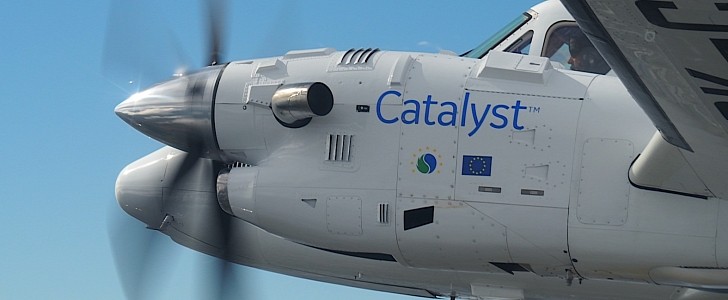There is a saying that goes something on the lines of “if it isn’t broken, don’t fix it.” Although generally a statement to live by, this phrase could at times lead to stagnation and hinder the development of new technologies.
Take turboprop engines, for instance. In essence turbine engines that spin propellers, these powerplants have been around from the late 1930s, and before other means of propulsion for aircraft came about, formed the heart of flying machines. They are still around, in large numbers, but their overall design has not changed much. Over in Europe, for instance, there hasn’t been a new turboprop engine made in more than half a century.
Back in 2015, GE Aviation started work on something called Catalyst, a turboprop that on the last day of September 2021 finally changed all that. The first test flight for the Catalyst lasted for one hour and forty minutes. A Beechcraft King Air fitted with it took off and landed at the Berlin Airport after touring the skies over the city.
Catalyst is an engine that “went through the most extensive certification testing ever for a turboprop engine in the business and general aviation segment.” Before flying attached to the Beechcraft King Air, it went through more than 2,600 hours of operation in ground tests.
The unit can develop between 850 and 1,600 shaft horsepower, and is controlled through a Full Authority Digital Engine Control (FADEC) system that should make the entire experience of operating it very jet-like. Fuel consumption should be 20 percent lower than in existing powerplants, and it should provide 10 percent higher cruise power than competitors in the same class.
Perhaps more importantly than being the first new turboprop design in 50 years is the fact this engine is the first of its kind ever assembled with 3D printed components.
GE Aviation does not say when the technology should be ready for deployment, but we do know the first customer for it: Textron Aviation, who will use it for the single-engine Beechcraft Denali.
Back in 2015, GE Aviation started work on something called Catalyst, a turboprop that on the last day of September 2021 finally changed all that. The first test flight for the Catalyst lasted for one hour and forty minutes. A Beechcraft King Air fitted with it took off and landed at the Berlin Airport after touring the skies over the city.
Catalyst is an engine that “went through the most extensive certification testing ever for a turboprop engine in the business and general aviation segment.” Before flying attached to the Beechcraft King Air, it went through more than 2,600 hours of operation in ground tests.
The unit can develop between 850 and 1,600 shaft horsepower, and is controlled through a Full Authority Digital Engine Control (FADEC) system that should make the entire experience of operating it very jet-like. Fuel consumption should be 20 percent lower than in existing powerplants, and it should provide 10 percent higher cruise power than competitors in the same class.
Perhaps more importantly than being the first new turboprop design in 50 years is the fact this engine is the first of its kind ever assembled with 3D printed components.
GE Aviation does not say when the technology should be ready for deployment, but we do know the first customer for it: Textron Aviation, who will use it for the single-engine Beechcraft Denali.








